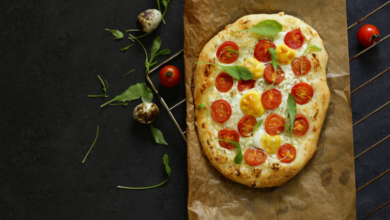Sourdough Vs Bakers Yeast: Which One Has More Pros Than Cons?
What To Know
- Baker’s yeast, also known as commercial yeast, is a strain of yeast that has been domesticated for use in baking.
- Whether you choose sourdough or baker’s yeast, the art of baking with leaveners is a journey of discovery and experimentation.
- To maintain a sourdough starter, you need to feed it regularly with a mixture of flour and water.
In the realm of baking, the choice between sourdough and baker’s yeast often sparks a heated debate. Both methods boast unique characteristics, imparting distinct flavors and textures to bread. This comprehensive guide delves into the intricacies of sourdough vs. baker’s yeast, empowering you to make an informed decision for your next baking adventure.
Sourdough: Nature’s Gift of Fermentation
Sourdough is an ancient leavening agent that has been used for centuries. It is made from a mixture of flour and water that is allowed to ferment naturally. This fermentation process is caused by wild yeast and bacteria that are present in the air and on the surface of the flour.
Advantages of Sourdough
- Complex Flavor Profile: Sourdough breads have a tangy, slightly sour flavor that is developed during the fermentation process. This flavor is often described as “rustic” or “earthy.”
- Improved Nutrition: The fermentation process in sourdough breaks down complex carbohydrates, making them more digestible. Sourdough bread also contains higher levels of vitamins, minerals, and antioxidants.
- Longer Shelf Life: Sourdough breads tend to have a longer shelf life than breads made with baker’s yeast. This is due to the presence of lactic acid, which acts as a natural preservative.
Baker’s Yeast: The Commercial Convenience
Baker’s yeast, also known as commercial yeast, is a strain of yeast that has been domesticated for use in baking. It is produced in large quantities and is available in both active dry and instant forms.
Advantages of Baker’s Yeast
- Fast and Predictable: Baker’s yeast is a very active leavening agent that produces consistent results. It requires less time to proof than sourdough, making it a more convenient option for quick baking projects.
- Controllable Flavor: Baker’s yeast does not impart a significant flavor to bread, so it allows for more control over the final taste.
- Widely Available: Baker’s yeast is readily available in most grocery stores and baking supply shops.
The Battle of the Leaveners: A Comparison
Flavor
- Sourdough: Tangy, slightly sour
- Baker’s Yeast: Neutral, no significant flavor
Texture
- Sourdough: Dense, chewy, with a slightly open crumb
- Baker’s Yeast: Light, fluffy, with a finer crumb
Fermentation Time
- Sourdough: Several hours to several days
- Baker’s Yeast: 1-2 hours
Shelf Life
- Sourdough: Up to 5 days
- Baker’s Yeast: Up to 3 days
Choosing the Right Leavener for Your Needs
The choice between sourdough and baker’s yeast ultimately depends on your personal preferences and baking goals.
- For a complex flavor and long shelf life: Sourdough is the ideal choice.
- For fast and predictable results: Baker’s yeast is the better option.
- For a neutral flavor and light texture: Baker’s yeast is preferred.
- For a dense and chewy texture: Sourdough is the way to go.
Wrap-Up: The Art of Baking with Leaveners
Whether you choose sourdough or baker’s yeast, the art of baking with leaveners is a journey of discovery and experimentation. Embrace the unique characteristics of each leavener and let your creativity shine through in your baking endeavors.
Frequently Asked Questions
Q: Can I use sourdough starter instead of baker’s yeast?
A: Yes, you can use sourdough starter as a substitute for baker’s yeast. However, you may need to adjust the amount of starter and the fermentation time accordingly.
Q: How do I maintain a sourdough starter?
A: To maintain a sourdough starter, you need to feed it regularly with a mixture of flour and water. The frequency of feeding depends on the temperature and activity level of your starter.
Q: What is the difference between active dry yeast and instant yeast?
A: Active dry yeast needs to be activated in warm water before use, while instant yeast can be added directly to the dough. Instant yeast is also more tolerant of high temperatures and can be used in bread machines.
